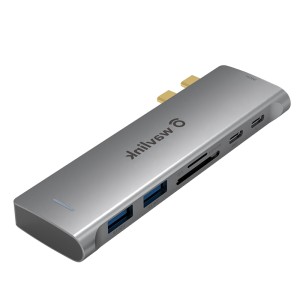As we all know, regular routers are not suitable for outdoor use as they are not waterproof, heat-resistant or cold-resistant. Their wind-resistance can be ignored since it's not practical to place them outdoors.
So, a new type of outdoor router product has emerged. But how do we choose an outdoor router? We first need to clarify the following questions, as these may greatly help with your selection.

The application scenarios for outdoor routers include:
- Outdoor public places: such as parks, squares, stadiums, and outdoor exhibitions.
- Rural areas: where traditional wired network infrastructure is difficult to implement.
- Construction sites: where temporary network access is required during construction projects.
- Transportation hubs: such as airports, train stations, and bus terminals, where a reliable wireless network is necessary for passengers.
- Industrial facilities: such as factories or warehouses, where a stable and robust wireless network is needed for operational purposes.
These are just some examples of how outdoor routers can be used in various settings to provide reliable and high-speed wireless connectivity.
- People who enjoy outdoor activities such as camping, hiking, or wilderness exploration can benefit from a 4G WiFi router in case of no wired network access. Although it may not be the most suitable option for these activities, it can still provide some connectivity.
- Institutions or enterprises that need to extend their wireless networks outdoors, such as campuses, resorts, and golf courses.
- Individuals or groups that need to work outdoors, conduct business or hold outdoor events, such as construction sites, real estate agencies, and outdoor advertising companies.
- Those who want to establish an outdoor WiFi coverage network at home so they can enjoy wireless connectivity both indoors and outdoors.
When purchasing an outdoor router, it is important to consider the following:
- Waterproof rating and interference resistance: Since outdoor routers are exposed to the elements for extended periods of time, it is crucial to ensure that the antenna remains intact and water does not enter the internal components. Additionally, it is recommended to choose a router with excellent interference resistance to maintain stable network connectivity.
- Transmission distance and signal strength: For outdoor applications, it is important to select a router with a longer transmission distance and stronger signal strength to ensure wider coverage and more reliable connection quality.
- Network connection speed: If you need to handle large amounts of data or perform high-bandwidth applications such as HD video streaming, it is advisable to purchase a router with higher network connection speeds.
- Security: It is recommended to choose a router equipped with advanced encryption technologies such as WPA2/WPA3 to ensure wireless network security and privacy.
- Ease of installation and management: It is best to select a router that is easy to install and manage to avoid overly complex setup and maintenance procedures. Additionally, routers with remote management capabilities can be beneficial for remote monitoring and management.
Materials commonly used for antennas include:
- Metal (such as aluminum, copper, steel, and alloys): Metal antennas offer higher signal transmission strength and stability.
- Plastic (such as polypropylene, polyethylene, and PVC etc.): Plastic antennas are usually more lightweight than metal antennas but have relatively lower signal transmission capabilities.
- Ceramic: Ceramics are widely used in industrial and military fields due to their high-temperature resistance and corrosion resistance.
- Graphite: Due to its excellent electrical conductivity and corrosion resistance, graphite is suitable for harsh outdoor environments.
- Carbon fiber: Carbon fiber antennas have features such as high strength and light weight, making them suitable for high-speed motion scenarios.
- Fiberglass: A composite material made of glass fiber reinforced plastic, fiberglass antennas have advantages such as corrosion resistance, lightweight, and high strength, making them ideal for use in harsh environments such as the ocean or desert.
There are various types of antennas for outdoor routers, including linear polarized antennas, directional antennas, sector antennas, and antenna arrays. Additionally, there are many options for antenna materials, such as metal, plastic, ceramic, graphite, carbon fiber, and fiberglass. When purchasing an outdoor router, it is important to consider the impact of the antenna type and material on signal transmission distance, strength, and stability, and choose accordingly based on your specific needs.

































